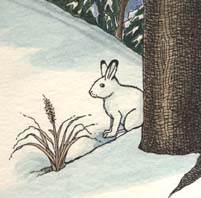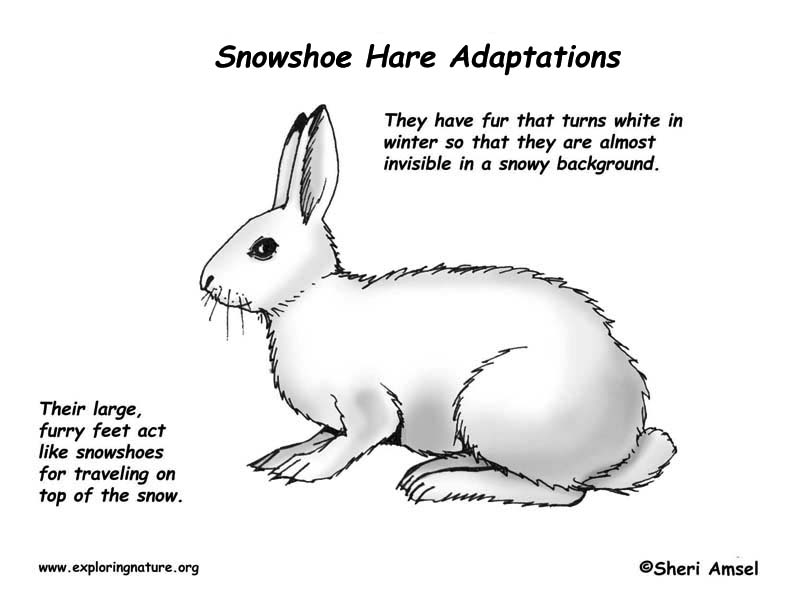

Adaptation in a population of living things happens as a result of an adaptive trait. This is any inheritable trait that increases its survival rate so that it can live longer, reproduce longer, and have more offspring (that also have that trait). Adaptive traits can improve an animal's ability to find food, make a safer home, escape predators, survive cold or heat or lack of water.
The snowshoe hare are well adapted for their life in the north. They have large, furry feet that act as snowshoes for traveling on top of the snow. Their fur is thick to protect them from freezing temperatures. It also turns white in winter so that they are almost invisible in a snowy background. This helps them hide from predators. These physical adaptations make it possible to survive in their harsh, northern climate.
For Discussion and Critical Thinking:
The snowshoe hare has adaptive traits that help it survive in deep now and freezing temperatures.
1. Name two of the snowshoe hare’s adaptive traits and how they help them survive:
2. If the Arctic warms with climate change and the brown tundra is exposed, how will this affect the snowshoe hare?
3. Name two other animals that live on the tundra and describe an adaptive traits that helps them survive.
4. Do you have any physical traits that help you survive? Discuss one.
When you research information you must cite the reference. Citing for websites is different from citing from books, magazines and periodicals. The style of citing shown here is from the MLA Style Citations (Modern Language Association).
When citing a WEBSITE the general format is as follows.
Author Last Name, First Name(s). "Title: Subtitle of Part of Web Page, if appropriate." Title: Subtitle: Section of Page if appropriate. Sponsoring/Publishing Agency, If Given. Additional significant descriptive information. Date of Electronic Publication or other Date, such as Last Updated. Day Month Year of access < URL >.
Amsel, Sheri. "Adaptations of the Snowshoe Hare" Exploring Nature Educational Resource ©2005-2024. December 13, 2024
< http://www.exploringnature.org/db/view/Adaptations-of-the-Snowshoe-Hare >

